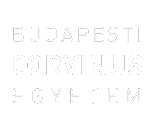Nöprick, Naomi Nicole (2020) How E-Commerce Supersedes its Tradi-tional Counterpart via Globalization 4.0 and the Industrial Revolution. BA/BSc szakdolgozat, BCE, International Study Programs. Szabadon elérhető változat / Unrestricted version: http://publikaciok.lib.uni-corvinus.hu/publikus/szd/Noprick_Naomi_Nicole.pdf
|
PDF
- Requires a PDF viewer such as GSview, Xpdf or Adobe Acrobat Reader
742kB |
Szabadon elérhető változat: http://publikaciok.lib.uni-corvinus.hu/publikus/szd/Noprick_Naomi_Nicole.pdf
Absztrakt (kivonat)
The title of my thesis Work is How E-commerce Supersedes its Traditional Counterpart via Globalization 4.0 and the Industrial Revolution. I choose this topic, because I am interested into Electronic Commerce and the course held by Professor László Kacsirek about Globalization 4.0 and Industrial Revolution really inspired me. The Internet and the development of technologies brought tons of new opportunities in our lives. The year of 200 without Internet is hardly imaginable. From the buyer side of view, it made life easier and much faster as well, we can pay bills, stay in touch with our family and order product from the other side of the globe. Online retail became one of the fastest growing industries in the world. Today it is much easier to trade internationally, because there is a well developed technological and logistical background supporting theses activities. Digitalization brought new opportunities into retailer lives. It developed new marketing tools, market research methods, companies can reach out much easier to their costumers and this changed business communication and their relationship as well. Globalization is also a closely related topic and a driving force in this process. It broadened the market and with the help of industrial revolution small business are able to keep up with the bigger companies. In the theoretical part I tried to go through the whole concept of Electronic Commerce. Examining its development which actually started in the mid-1960s but the real break-through came after the appearance of the Internet. The different forms of E-commerce were also listed on the one hand, based on who is trading, here 4 categories can be found Business-to-business (this is the biggest of all) Business-to-consumer, Consumer-to-consumer and Business-to-government. On the other hand, the development of e-commerce resulted new subspecies such as Mobile-commerce, E-business and Social Commerce. In order to see how E-commerce could be able to supersede its traditional counter part, it was important to take a look at what benefits it has compared to traditional trade. E-commerce has many advantages for example the transaction cost, availability, marketing tools, transparency in pricing etc. I used secondary research with quantitative and qualitative data as well because I referred to them as the right and left hemisphere, so we need the both to have a balance. My research question was related to one of the most actual topic, the COVID-19 pandemic. I wanted to figure out during my thesis whether the Coronavirus accelerates the transitions between Traditional commerce and E-commerce. I dug into the topic and examined the relationship between E-commerce and the virus, which showed that online retail overgrew itself by 5 years at least. I also researched the relationship between Globalization 4.0, Industrial Revolution and COVID-19. I came to a conclusion that from the year of 2020 these two concept will operate separately, since the pandemic resulted a stop in the free movement of people and reduced the international investments as well which are covering a big part of the notion of Globalization. On the other hand, technological tools came to the fore: companies started to continue their work remotely by using Zoom and Microsoft Teams, the quarantine resulted a big drop in the tourism, cultural-creative and entertainment industry and in the food industry as well. People looked for alternative solutions such as streaming services, food delivery it increased also the usage of mobile applications. Physical store retailers also tried to eliminate most of the losses by going online with their businesses, they introduced delivery and pick-up system. All these changes created even more space for technological development in the future. At the end I wrote about the importance of the Adaptation of Change which in this situation already showed, that fast reaction time can help families, companies, governments, countries to overcome easier the difficulties. Those countries who reacted fast, have less infections and can start earlier a recovery process on their economy. Retailers with fast reaction time were able to even profit from this situation or at least lay the foundation for the future and save their businesses from a downfall. Corporations managed to continue their activities by working remotely, which also kept their workers save. COVID-19 brought an enormous amount of unexpected changes it reshaped the economy, consumer behavior and the way how we now live our daily lives. It probably will challenge us further in the future as well, so the most important lesson is for everyone to adopt all these changes as fast as possible, and who knows we might even benefit from it.
| Tétel típus: | BA/BSc szakdolgozat |
|---|---|
| Témakör: | Kereskedelem, Turizmus, Vendéglátás Nemzetközi gazdaság |
| Azonosító kód: | 13991 |
| Képzés/szak: | Economist in International Business |
| Elhelyezés dátuma: | 06 Okt 2021 10:44 |
| Utolsó változtatás: | 02 Dec 2021 11:50 |
Csak a repozitórium munkatársainak: tétel módosító lap

